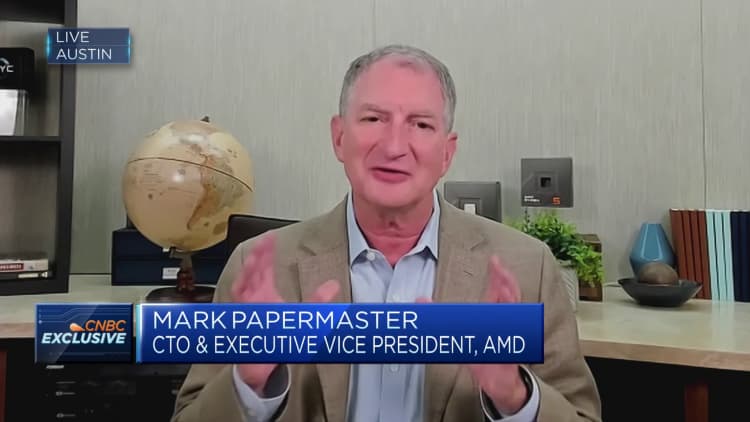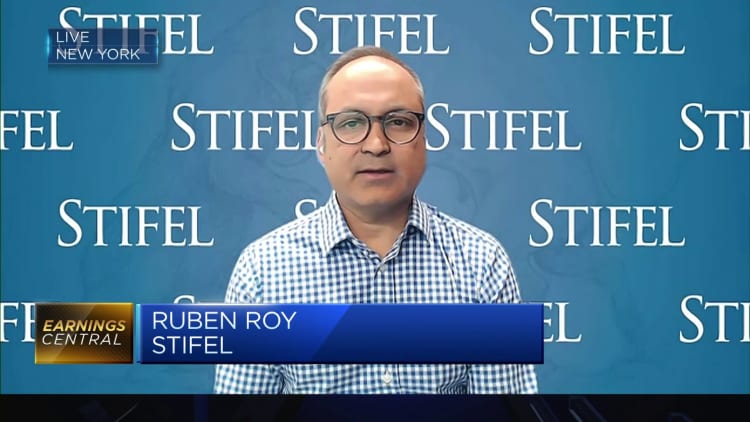[ad_1]

Advanced Micro Devices needs India to keep up with the growing demand for its products, its executive vice president and chief technology officer told CNBC in an exclusive interview.
“We have a global workforce. Our design efforts are global and doubling down on those investments, continuing our growth in India, are all part of what we need to stay pace with the growing demand for our products,” Mark Papermaster said on CNBC’s “Squawk Box Asia” on Thursday.
related investing news


On Friday, AMD announced its plans to invest approximately $400 million to continue its growth in India. The investment will go toward building the firm’s largest design center, which is expected to open before the end of 2023, as well as the addition of about 3,000 engineering roles by the end of 2028.
“We started with a small number of employees in Delhi in 2001. Today, we have over 6,500 full-time employees, and over 3,500 service contractors. So it’s with a population of about 10,000 people. And we’re really pleased to be growing our investment in India — a huge part of our portfolio and product development,” said Papermaster.
AMD is one of the few firms that produces the high-end graphics processing units needed for artificial intelligence. AMD processors can be found in a wide range of devices including computers, servers and gaming consoles.
“We’re really excited about MI300, our next generation AI chip. It’s going to take on the most powerful AI chip in the industry. And it couldn’t come at a more needed time because the industry needs more AI computing power,” said Papermaster.
“And we have a design aspect of that being done in India. We now have the India design team touching almost every product that we develop in AMD,” said Papermaster.
Ruben Roy, managing director of equity research at financial services firm Stifel, said that AMD is the “only viable alternative” to Nvidia’s high-performance H100 and A100 GPUs.

“They’re pushing very hard. R&D is going up. They are investing quite aggressively in AI,” Roy said on CNBC’s “Squawk Box Asia” on Wednesday.
Papermaster told CNBC, “What we focus on is leveraging the latest cutting-edge semiconductor nodes. And we bring our design prowess to really differentiate our products.”
“That’s where India is so huge for us. Because if you look at our global population, about 25% of it is in India, and we are an engineering dominated workforce,” he said.
This week, the government of the state of Karnataka said that Taiwan’s Foxconn will invest more than $600 million in India as part of a phone manufacturing project as well as a separate semiconductor equipment facility.
Diversifying
Papermaster said AMD is looking into further diversifying its supply chains. This comes amid U.S.-China tensions that have impacted firms doing business in both countries.
“In terms of de-risking our manufacturing, we do have a diversified supply base. And we will continue to look at options in terms of adding more diversity to our supply base,” he said.
“As a semiconductor design company that has a strong base in India, we believe getting that diversity of the supply chain, and getting key elements of that in India, will be helpful to us.”
He further added that India’s Prime Minister Narendra Modi has a “strong program” called “Make in India” which offers incentives for semiconductor companies to develop, manufacture and assemble products in India.
In an earnings call Tuesday, Lisa Su, CEO of AMD, said that China is an important market for the firm.
She also said that there is an opportunity to develop a China-specific AI chip in order to comply with U.S. export curbs, in a move that will follow rivals Nvidia and Intel.
AMD posted better-than-expected second-quarter results on Tuesday even as the PC market shows continued weakness.
[ad_2]

